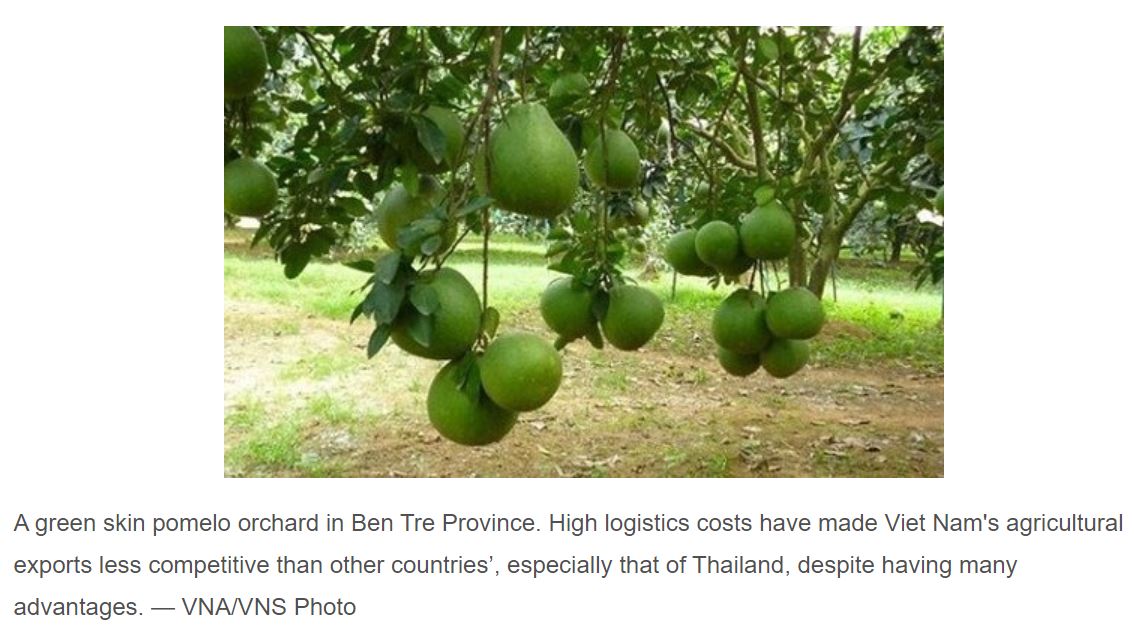High logistics costs stymie Vietnam farm exports
High logistics costs have made Viet Nam’s agricultural exports less competitive than other countries’, especially that of Thailand, despite having many advantages, according to businesses.
Logistics account for 20-25 per cent of the cost of Viet Nam’s agricultural produce, while it is only 12 per cent in Thailand and 14 per cent globally, Nguyen Dinh Tung, vice chairman of the Viet Nam Fruit and Vegetables Association, told a seminar on improving supply chain value of farm produce exports in HCM City on June 23.
“Vietnamese fruits are not inferior to Thailand’s in terms of quality, but less competitive due to higher costs.”
Tung is also general director of Vina T&T Group, one of the country’s leading fruit and vegetable exporters.
For companies exporting agricultural items by air, such as Vina T&T, logistics costs account for more than 30 per cent, and so, after irradiation and other costs, they earn very low profits, he said.
Nguyen Tu Uyen, director of CMU Logistics Transportation Services Co., Ltd, said the cost of transporting agricultural products from Thailand to international markets is US$1 – 1.2 per kilogramme less than from Ha Noi and HCM City thanks to the many daily flights to the US, Europe, Australia, and other markets and ships connecting Thailand with 70 destinations in Asia and the Middle East.
Viet Nam’s warehouse system remains fragmented, and there is a lack of agricultural processing facilities and cold storages, she said.
There is no irradiation facility in the north for lychee, and so, to export the fruit to the US, businesses have to transport it from Bac Giang Province to HCM City and then to their plants for packing before sending them for irradiation.
This pushes up costs, and the long time it takes for transportation reduces the freshness of the lychee, she said.
Nguyen Thanh Binh, chairman of the Viet Nam Fruit and Vegetables Association, said since the production, processing and preservation infrastructure is still poor in Viet Nam, losses are high.
Separate warehouses and vehicles are needed for fruits and vegetables, but Viet Nam still does not have them, and as a result post-harvest losses are very high at 30-35 per cent, he said.
Tung said the logistics infrastructure in many localities in the Mekong Delta region, the country’s agricultural and aquatic hub, remains sketchy.
Thus, when a business buys agricultural produce at a farm, it needs to depend on boats, motorbikes, tricycles, or small trucks to transport it to its plants since large vehicles are unable to reach these places, he added.
According to businesses, the Government needs to further invest in road infrastructure in the delta’s raw material-growing areas so that farmers and co-operatives can ship agricultural produce to export markets when still fresh.
It also needs to make zoning plans for agricultural logistics centres with cold storages to enable sorting and preliminary processing to improve quality, they added.
Nevertheless, waterway and rail links are also needed, they said. — VNS


 English
English




